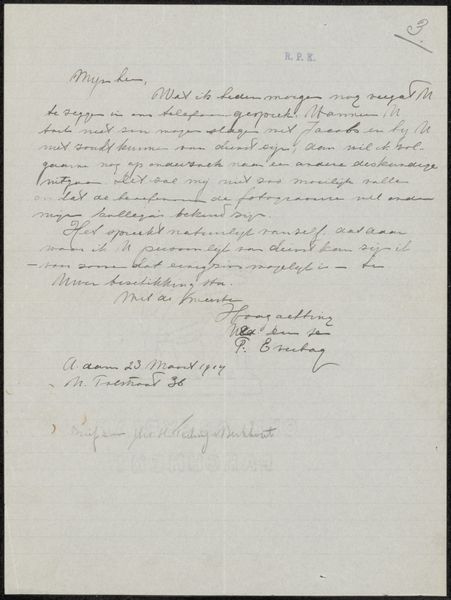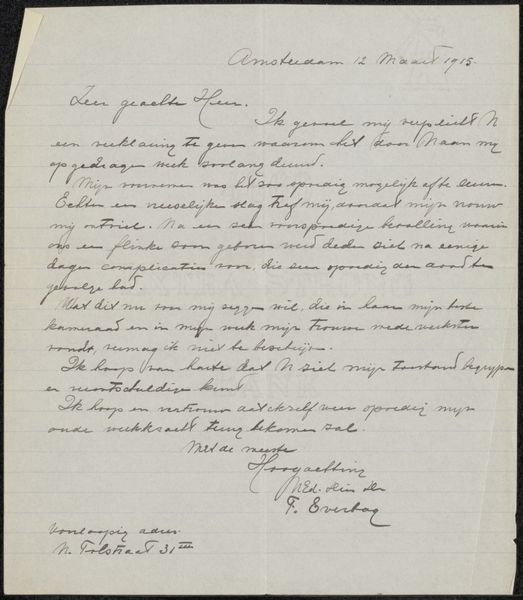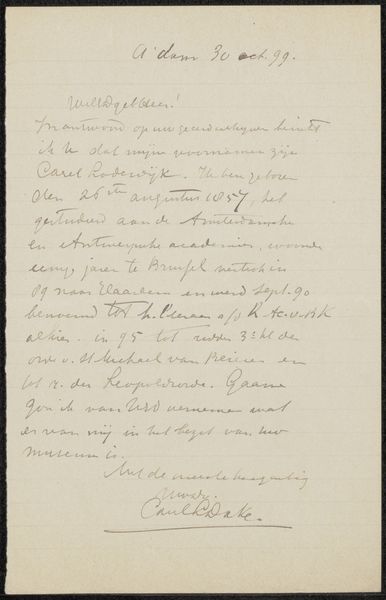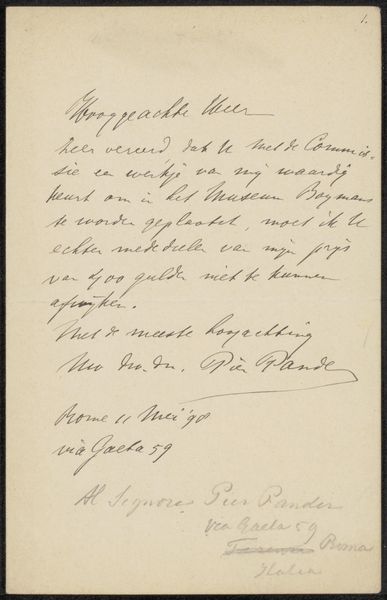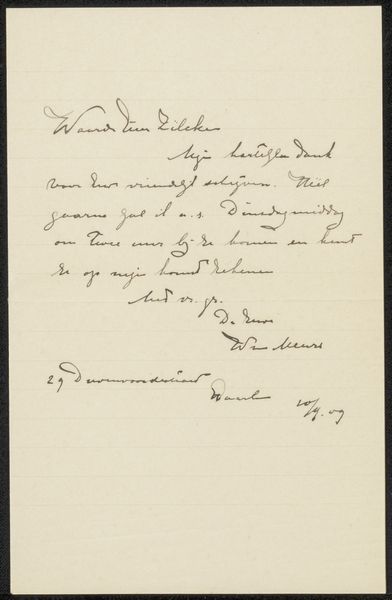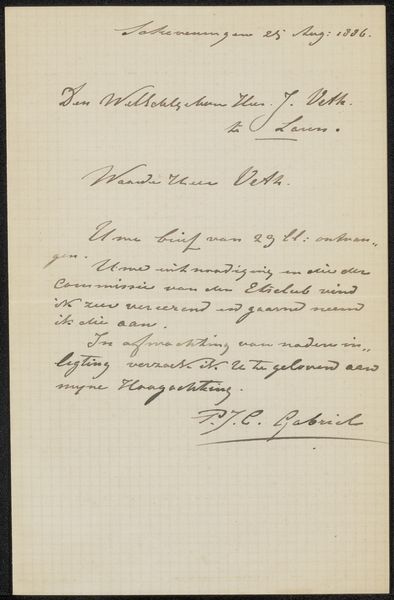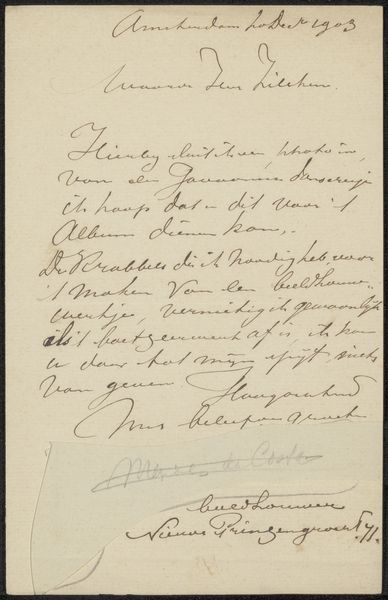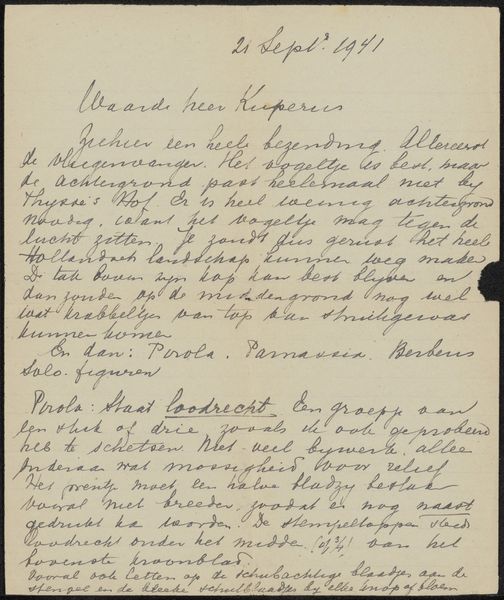
drawing, paper, ink
#
drawing
#
paper
#
ink
Copyright: Rijks Museum: Open Domain
Curator: So, here we have "Brief aan Johan Philip van der Kellen" a letter, quite possibly dating between 1890 and 1899, currently residing in the Rijksmuseum. The artist is Henri Wouters, and it's ink on paper, a simple yet intimate medium. What’s your first impression? Editor: My first thought is intimacy, almost like catching a glimpse of a private moment frozen in time. The delicate script, the way the ink bleeds slightly into the paper...it’s really fragile, almost ephemeral, as if the words might just float away. Curator: Absolutely, there's a vulnerability there, isn't there? Knowing that this personal correspondence, a moment between two individuals, now exists within the vast public space of a museum feels almost like an act of exposure. It is important to keep in mind though, that access to resources such as the ones being negotiated, more than a 'personal' transaction were central for those navigating and relying on cultural markets, therefore not so distant from public life, as one would expect. Editor: True, but I also can’t help thinking about literacy and class during this period. Who had the privilege of writing and receiving letters? And what does the content of the letter – what can we piece together from it – tell us about the relationship between Wouters and van der Kellen? The letter appears to refer to "schilderij ‘garnalenvisschers’ van B.J. Blommers." Why would one write this type of request for it? Curator: From what I can gather, Wouters offers van der Kellen to sell a piece that may have to do with ‘garnalenvisschers’ of B.J. Blommers to him, for the price of five. I wonder how Wouters positioned his identity to van der Kellen in order to gain their trust. Editor: That tension—the accessibility, the fragility—really adds a layer of depth for me. It encourages thinking about power dynamics but it makes one consider the writer's world, even beyond its market exchanges and transactional interactions. Curator: I'm drawn to its inherent contradictions. The writing itself becomes a testament to the flow of ink but also history, which I personally like about drawing; its accessibility makes drawing feel inherently more approachable. Editor: Perhaps the contradictions are part of its lasting impact; it reminds us to question whose voices and narratives become immortalized in the historical archives, who writes the history and in what conditions they are even able to write it at all. Curator: Exactly. It's a small thing, but sometimes the smallest of drawings speak the loudest.
Comments
No comments
Be the first to comment and join the conversation on the ultimate creative platform.

